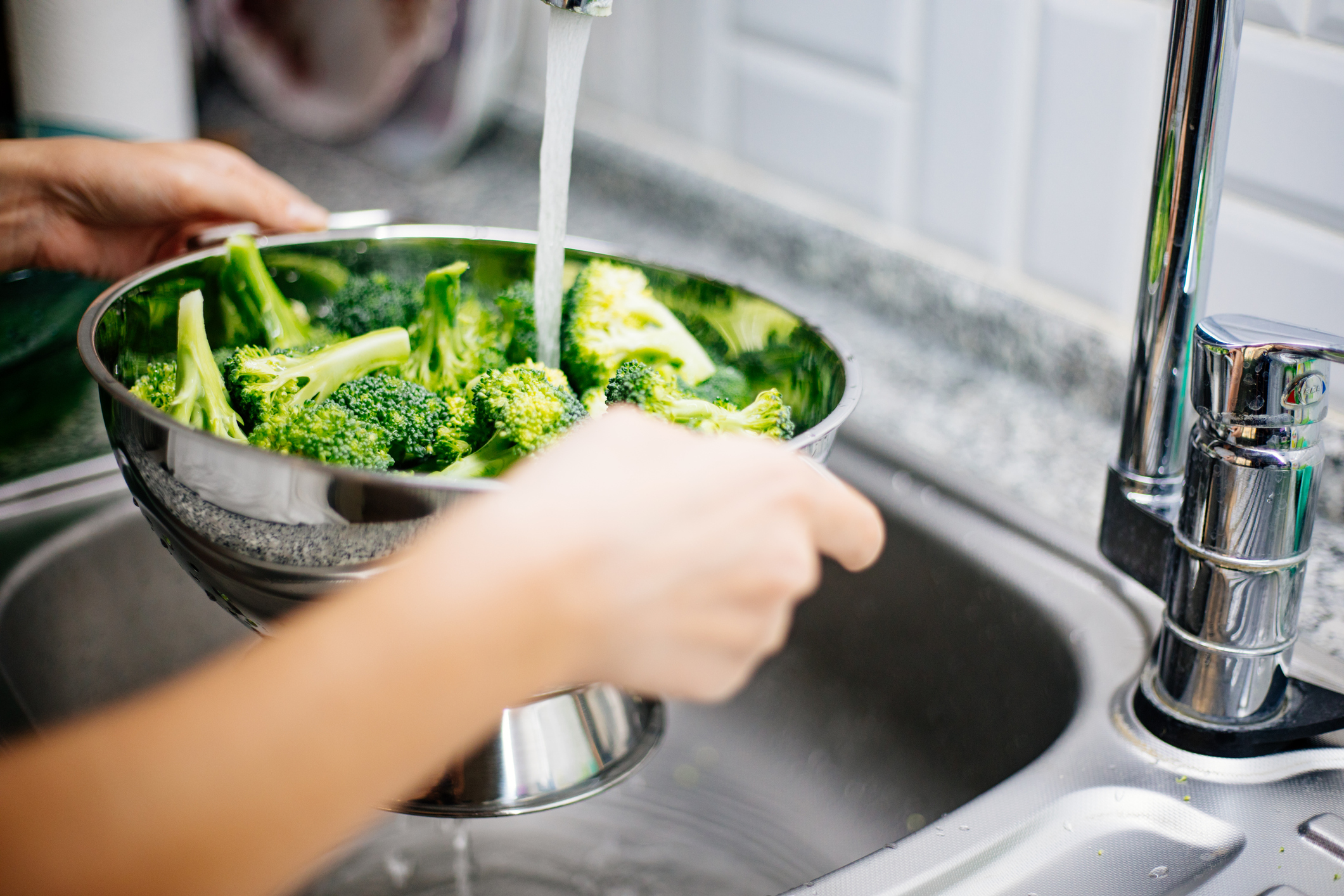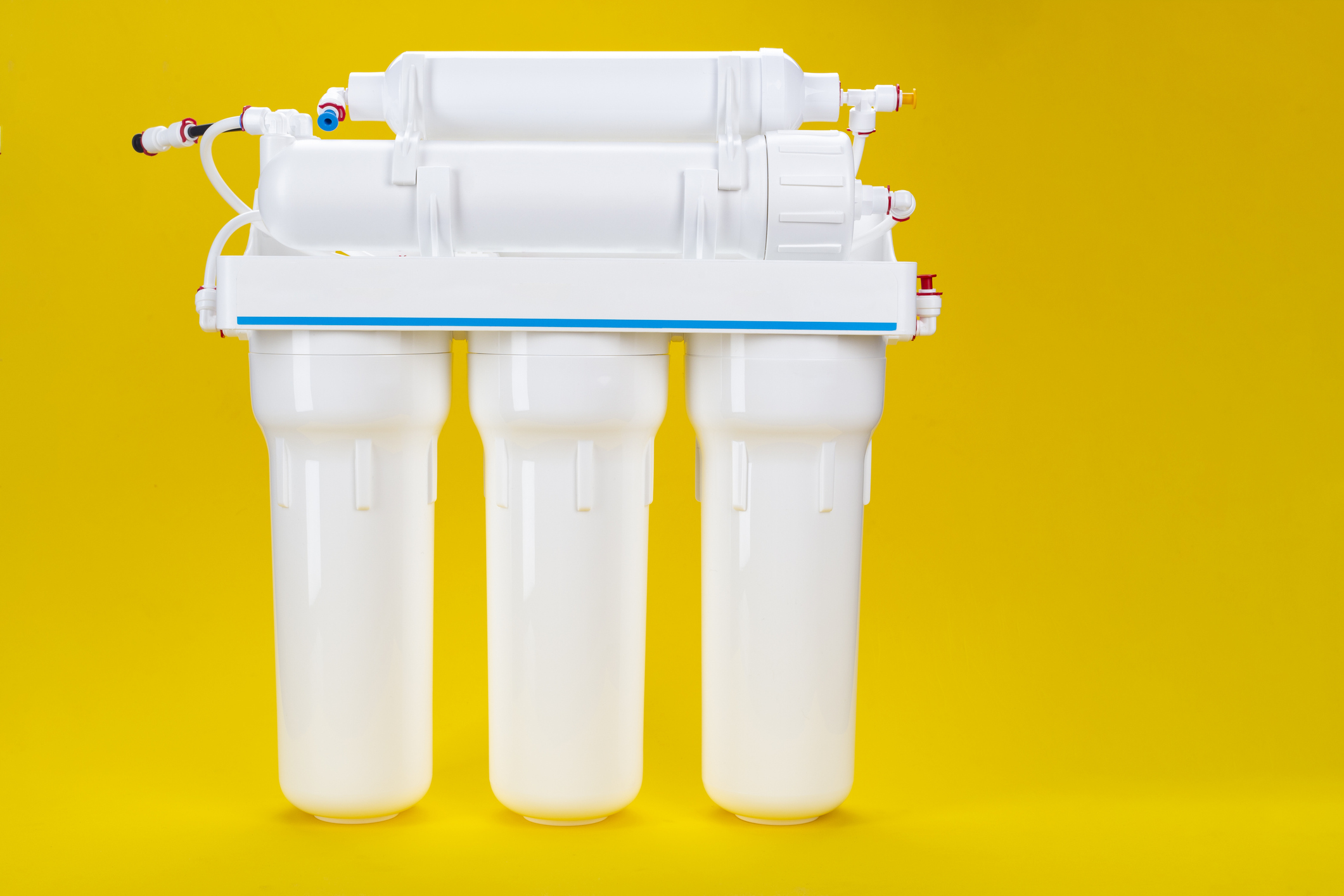By now, you may have seen our blog on water purifiers and our guide to water treatment systems, but we’re not done yet. We wanted to continue our series on water treatment and breakdown everything you need to know about reverse osmosis systems.
There’s a chance you’ve never heard of a reverse osmosis system and don’t know much about what it is or what it does. Don't worry; you’re not alone. We regularly receive questions about our water treatment systems, particularly reverse osmosis.
That's why we spun up this helpful guide to highlight some of the most frequently asked questions regarding reverse osmosis. Stick around—you might just learn a thing or two.

What is a Reverse Osmosis System?
We’ll start simple with the most common question: What is a reverse osmosis system?
A reverse osmosis system is a device that goes through the process of removing any foreign contaminants, substances, large molecules, and minerals from your water. The device uses a high-pressure cleansing system to push these contaminants out through specialized membranes, improving your everyday water for drinking, cooking, bathing, and other important uses.
What is Reverse Osmosis?
First, it’s important to understand what regular osmosis is. With regular osmosis, a diluted solution flows through a membrane into a more concentrated one. Like when you take a long shower or get out after a long dip in the pool and notice your fingertips are all wrinkled, through osmosis, the water in our bodies can pass through our skin out to the water surrounding us.
As the name implies, reverse osmosis takes the same natural process that occurs in every cell-based organism—plants, animals, and even people—and reverses it. It requires an external force or pressure to work. The high-pressure water will allow a highly concentrated solution like saltwater to pass through a membrane to a lower concentrate solution.
How Does a Reverse Osmosis System Work?
As we mentioned, it’s a method that can remove minerals, substances, molecules, and impurities from the water in your home. The process takes place in four specific functions: Pre-filtration, reverse osmosis, drainage, and storage.
- Pre-filtration: Connects to water lines and uses a high-pressure pump to propel feed water through to catch minerals and sediments
- Reverse osmosis: In this step, the feed water is pushed through the semipermeable membrane
- Drainage and storage: The reverse osmosis system drains out any contaminants that were not caught in the filters during the previous stages. The clean, treated water is stored in a small tank until it’s ready for use

How Much Does a Reverse Osmosis System Cost?
Prices can certainly vary. A common commercial-grade reverse osmosis system can be affordable, but if you require a whole house system with water treatment, booster pumps, installation, and so on, these are all factors that will increase the cost. Our Envirotec reverse osmosis systems can save hundreds of gallons of water over other systems from national brands—while selling for a third or half of the cost
To make things easy, give us a call at Spencer’s to find out more about the best price, extra savings offers, and availability.
How to Install a Reverse Osmosis System?
Reverse osmosis systems can be installed to treat all the water in your home, but it’s more common to find one in an under-counter unit beneath the kitchen sink where much of the water for cooking and drinking is provided.
Installation is fairly straightforward, requiring only a few handy tools and minimal plumbing skills. Installation requires 8 steps and a few hours of your time—the perfect fixer-upper project for a Saturday afternoon.
Step 1: Have a plan and take proper measurements of the available space beforehand.
Step 2: Prepare your system—testing each component to determine if adjustments to the drain pipes or water supply will be necessary. The system should be installed on the cold water line.
Step 3: Install the sink spigot first so you can feed the lines through before it gets too crowded beneath the installation area.
Step 4: Install the tank connector and position the reverse osmosis tank directly below the sink-top spigot.
Step 5: Screw the hanger washers onto the wall a minimum of 15 1/2 inches from the floor and set the assembly on the washers.
Step 6: Attach the waterline (turn off the water supply first).
Step 7: Connect any additional tubing—prefilter units, canisters, etc. This will depend on the model and manufacturer.
Step 8: Connect the drain and perform a pressure test to ensure the system is fully pressurized with no leaks. It can take two hours to get full pressure and it’s best to let the system drain for 24 hours before drinking any of the water.
For a more detailed and in-depth breakdown of the installation process, contact us or check out this article here.
How to Replace Filters in a Reverse Osmosis System?
Like anything else, your reverse osmosis system will require some maintenance. Knowing how to properly change the filters allows this device to function for years to come.
Eventually, the filters that trap debris and sediment won’t be as strong and particles will be left behind. If these undesirable contaminants remain stuck in your filter, your water will not be pure.
Reverse osmosis systems come with a few different filters, each of which should be replaced at least once or twice per year. If you think it’s time to change your filters for the first time, here’s how you do it:
Step 1: Acquire the replacement filters and keep them in the original packaging until you’re ready to install. If they are exposed, they will trap dirt and debris from their surroundings.
Step 2: Wash your hands thoroughly right before you install. Any bacteria from your hands can transfer from your hands onto the filter and begin to fester.
Step 3: Shut off the water supply and valves leading to your system’s storage tank. If possible, activate the bypass valve so water can continue flowing.
Step 4: Identify the exact filter that needs replacing and locate the appropriate compartment you need to work on.
Step 5: Unscrew the compartment’s lid or base. This may require some hardware if the pieces are screwed on tightly.
Step 6: Inspect the O-rings or gaskets to check for tears or damage. Place them to the side.
Step 7: Remove the existing filter from its housing. Properly dispose of the old filter and give the housing case a good rinse.
Step 8: Insert the new filter. It should slide right into place—if you have to force it, you probably purchased the wrong filter size. Reinsert the O-ring and housing compartment back in its intended spot.
Step 9: Once everything is secure, reactivate your water supply line and switch off any valves you used in step 4 to restore your reverse osmosis system to its operational state.

Is a Reverse Osmosis System Worth it?
If you want cleaner, healthier drinking water, a reverse osmosis system is more than worth it.
It helps to remove hard-to-detect contaminants such as lead and arsenic that can pose health risks. Drinking the reverse osmosis water can help minimize potentially harmful contaminants such as high blood pressure, low fertility, skin issues, and increased carcinogen creation.
While you’ll certainly be able to smell, feel, and taste the difference, reverse osmosis water also removes non-harmful minerals that can be beneficial to your health. Chemicals and bacteria are filtered out, but good minerals like iron, calcium, manganese, and fluoride are also removed during the reverse osmosis process.
Consider your needs and the overall health benefits when deciding if a reverse osmosis system is right for you.
Which Reverse Osmosis System is Best for Health?
Regardless of your choice, Spencer’s reverse osmosis systems are designed to provide your home with cleaner, safer water you can rely on. If you want an endless supply of reverse osmosis water or a smaller compact design that can connect to any water line, we can help you find the best water filtration system to fit your needs.
We carry 4-stage, 5-stage, and 6-stage filtration systems. The Envirotec 4-stage system is designed for harsher water conditions with normal production needs. This model will deliver water up to twice as fast as competing brands with a special brass and lead-free High Flow design. And the water conservation shut-off can save hundreds of gallons of water each month.
Did you know your body is 70 percent water? We all need water, and especially for us here in Arizona who dwell in desert climates, staying hydrated at all times is vital. The 5-stage system purifies your water and reduces the contaminants that are pumped into your system. This allows you to drink plenty of clean water to help maintain your metabolism and cleanse your body of impurities.
And beyond ordinary drinking water, the purification system improves the taste of coffee, tea, and other beverages that require H2O, as well as ensuring your ice cubes are clear and free of any murky residue.
The 6-stage system is specifically designed for the harshest water conditions with higher production needs. The Stage Four ECT Filtration feature extends the water contact time with carbon 60 times longer than our competitors, thus doing a better job of reducing contaminants.
Sediment reduction to one micron is 40 times smaller than what’s visible to the human eye. The carbon filtration has the highest chemical absorption rate of any similar dimension carbon block filter, the Remineralization Filter adds minerals back into the water and helps to increase the pH of the water, and the polishing filter allows water to pass through a specific coconut carbon blend flavor filter to ensure the best-tasting water.

Where to Buy Reverse Osmosis Systems?
It’s no secret by now; Spencer’s is the place for all your water treatment needs. If you have questions or would like more information on reverse osmosis systems, don’t hesitate to give us a call or chat with us online. And if you’d like to take a look in-person, visit one of our Spencer’s locations today.



